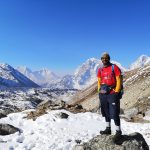
The Rising Cost of Conquering Everest
January 24, 2025
Langtang Trek: Adventure Journey to Langtang Valley
January 30, 2025
The Rising Cost of Conquering Everest
January 24, 2025
Langtang Trek: Adventure Journey to Langtang Valley
January 30, 2025If you’ve ever dreamt of pushing yourself to the limit, of stepping out of your comfort zone and into the heart of the Himalayas, Nepal is the perfect place for your next big challenge. The country is home to some of the most breathtaking landscapes in the world, but it also holds some of the most demanding trekking routes on Earth. For those looking for more than just a scenic walk, Nepal’s toughest treks are where grit meets grandeur.
From remote mountain passes to steep ascents at staggering altitudes, these treks are designed for adventurers who thrive on a challenge. But with every grueling step, the rewards are immense. Picture this: standing at a high pass, wind whipping around you, feeling the weight of the mountains at your back, while panoramic views of snow-capped peaks stretch as far as the eye can see. That feeling of triumph? It’s a treasure you’ll carry with you long after the trek is over. Are you ready for the challenge? Let’s go!
1. Annapurna Circuit Trek: The Ultimate All-Rounder
If you're looking for the perfect blend of stunning landscapes, cultural richness, and an achievable challenge, The Annapurna Circuit Trek is undoubtedly one of the best treks in Nepal. Widely regarded as one of the most iconic trekking routes in the world, this trek takes you through a variety of terrains, from lush subtropical forests to arid high-altitude deserts, all while offering jaw-dropping views of the Annapurna and Dhaulagiri Mountain ranges.
Why the Annapurna Circuit Trek is So Special
The Annapurna Circuit is known for its diversity—both in the landscapes it passes through and the experiences it offers. Over 15-20 days, you'll travel through several distinct eco-zones, each with unique beauty and charm. The trek starts in the lush subtropical regions, passes through picturesque villages, ascends to alpine meadows, and ultimately reaches the high desert terrain on the other side of the Thorong La Pass (5,416 meters)—the trek's highest point. The Annapurna Circuit is also unique because it allows you to trek around the Annapurna Massif, one of the world's most majestic mountain ranges.
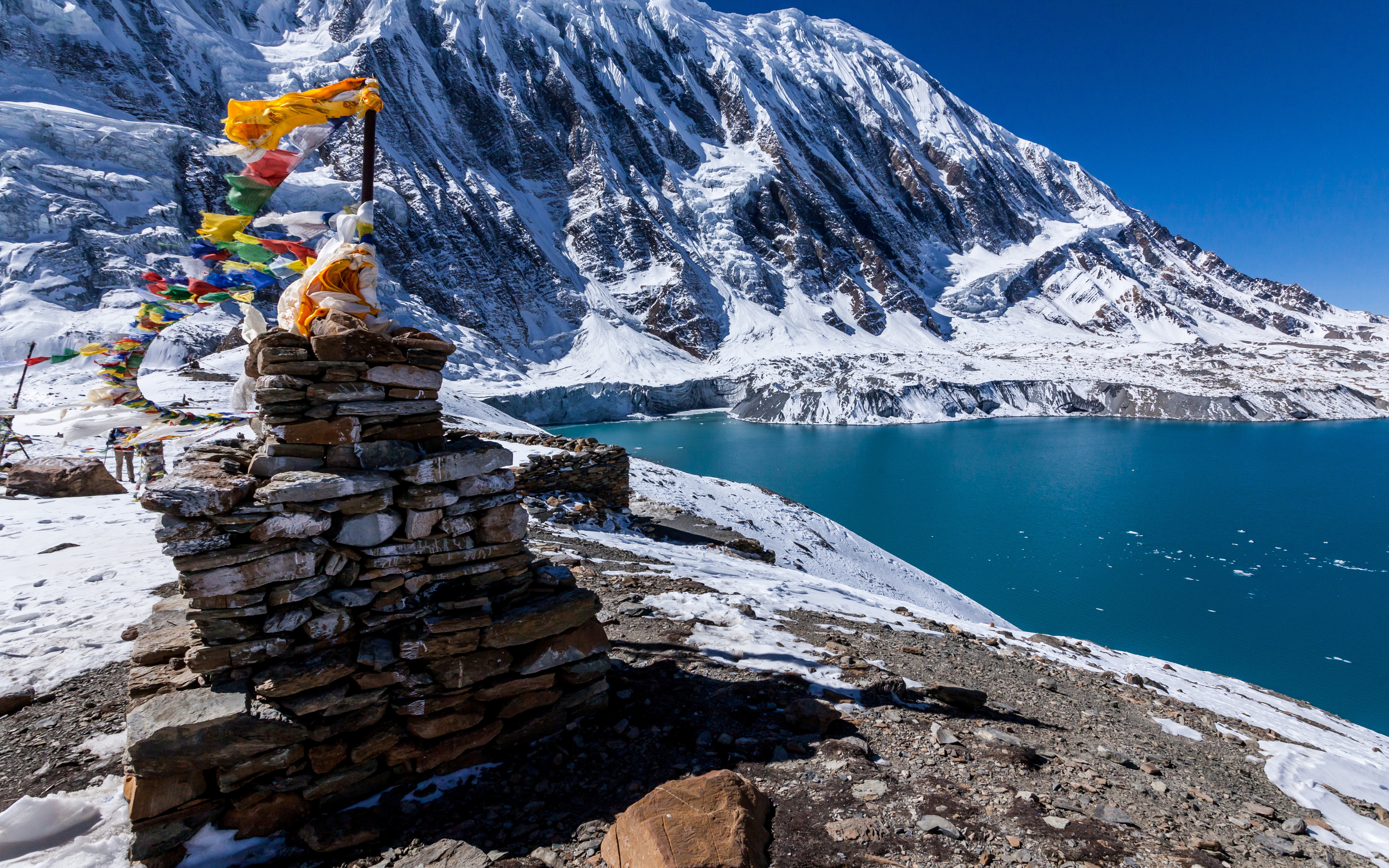
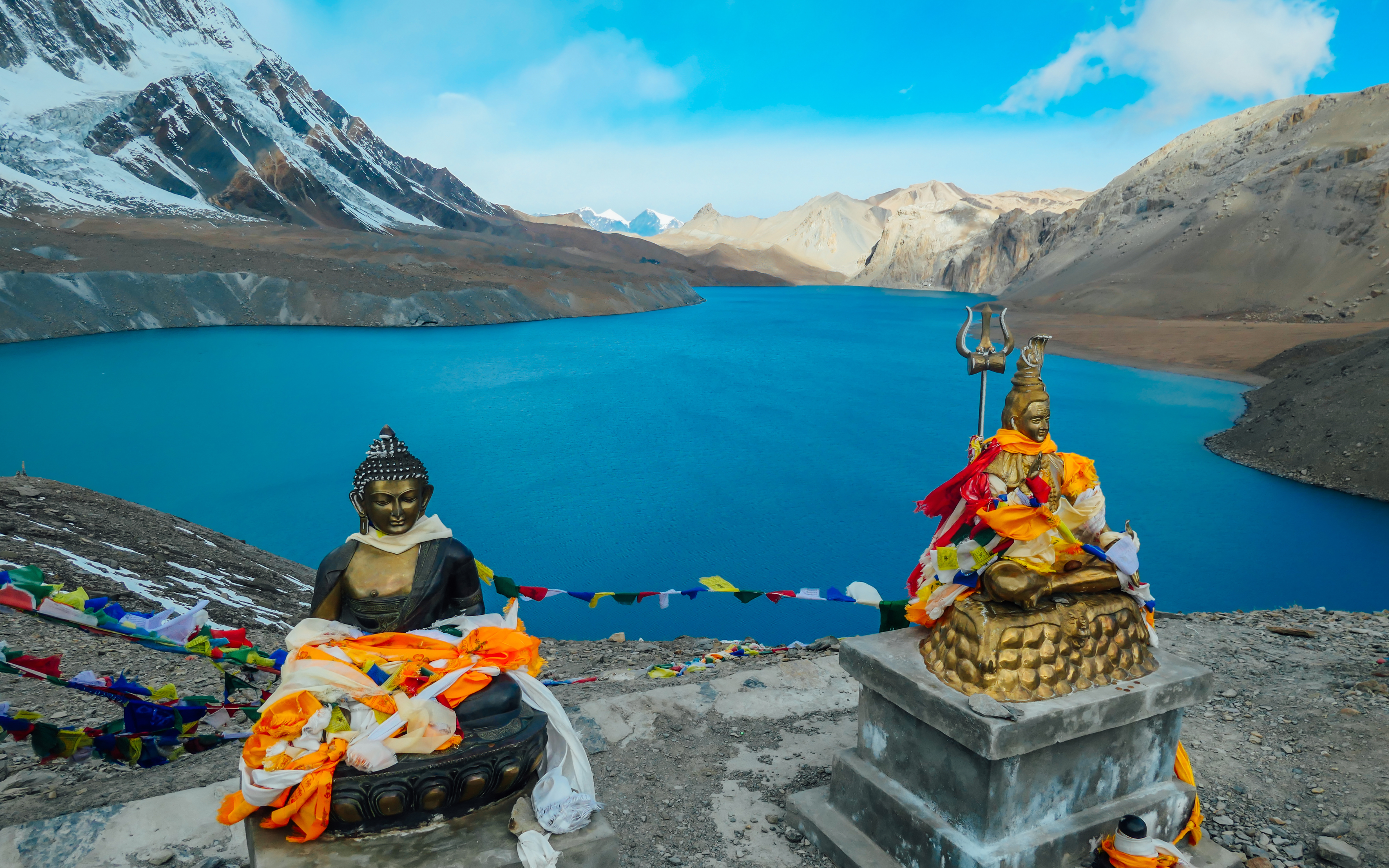
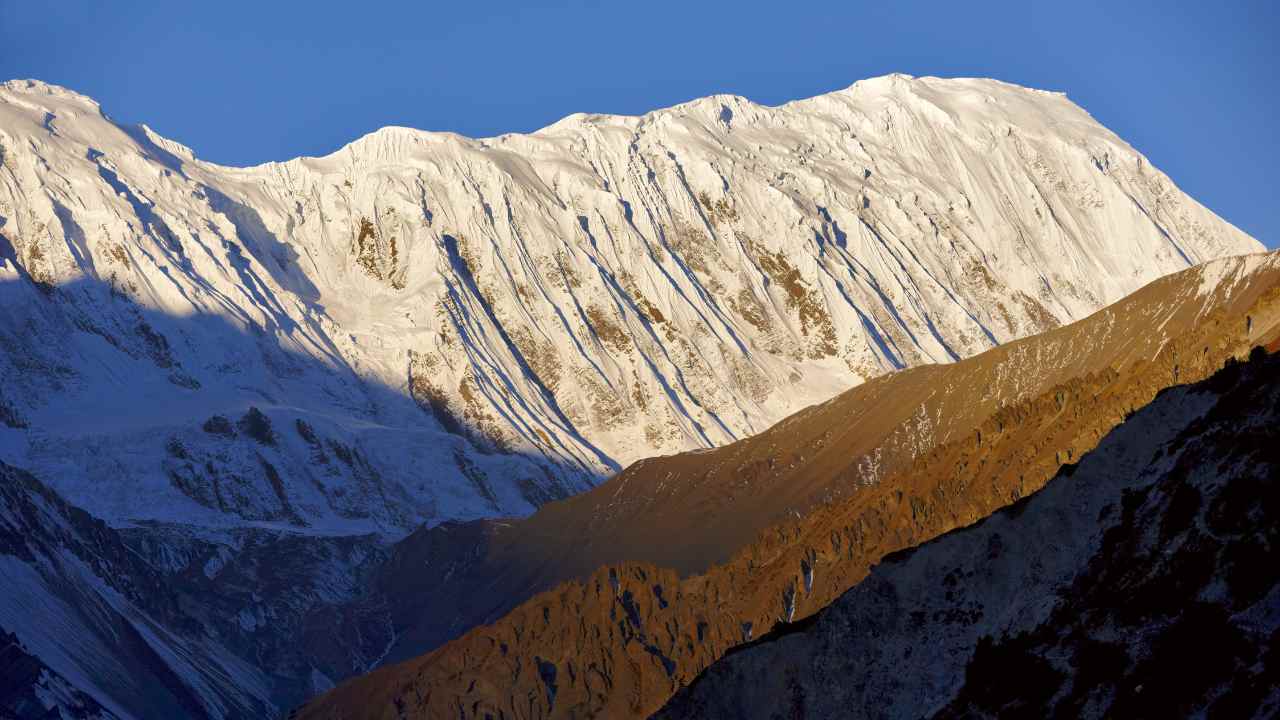
The Trek's Difficulty
While The Annapurna Circuit is one of the most popular treks in Nepal, it's by no means a walk in the park. It's a physically demanding route that tests your endurance, especially as you approach higher altitudes. Thorong La Pass, the highest point on the trek, stands at 5,416 meters (17,769 feet), which can bring on symptoms of altitude sickness.
The trek's difficulty lies in its combination of long days, steep ascents and descents, and unpredictable weather, which can shift from sunny warmth to chilly, gusty winds in hours. The high-altitude environment also poses the risk of altitude sickness, and trekkers must pay close attention to how their bodies react as they ascend.
However, The Annapurna Circuit is considered one of Nepal's more achievable high-altitude treks due to the well-maintained trail, ample teahouses along the route, and relatively low risk of severe altitude sickness compared to other extreme routes. Still, the climb to Thorong La Pass remains challenging, with a few hours spent in thin air and extreme conditions.
A Trekker's Paradise: Diverse Terrain and Views
What sets the Annapurna Circuit apart is its diverse terrain and breathtaking views. You begin your journey in Besisahar, where lush green hillside with terraced fields greet you. As you move higher, the scenery changes dramatically: you'll trek through dense subtropical forests, cross roaring rivers, and pass waterfalls, eventually emerging into more barren, rocky landscapes as you approach the high deserts beyond the pass.
At the highest altitudes, the landscape transforms into stark, rugged terrain where only a few hardy shrubs and grasses survive. The views are nothing short of awe-inspiring. On clear days, you'll get panoramic views of towering peaks like Annapurna I (8091 meters), Machapuchare (6997 meters), and Dhaulagiri (8167 meters), making every step worth the effort.
The trek also passes through various cultural landmarks, including villages where you'll interact with the Gurung and Thakali people. These communities have lived in the region for centuries, and their unique culture and hospitality add a rich layer to the experience. For example, the Manang and Jomsom areas are famous for their traditional Tibetan Buddhist monasteries, and visitors often encounter prayer flags fluttering in the wind, creating an atmosphere of serenity and reverence.
The Thrill of Crossing Thorong La Pass
Reaching Thorong La Pass is a significant achievement. The final push-up to the pass is long and strenuous, and many trekkers start early in the morning to ensure they can make it safely before the weather turns. Once at the top, however, you'll be greeted by sweeping panoramic views of the Annapurna and Dhaulagiri ranges. The sense of accomplishment that comes with standing atop this pass, having conquered one of the highest trekking passes in the world, is truly exhilarating.
Conclusion
The Annapurna Circuit is more than just a trek—an adventure that will last a lifetime. It's an opportunity to challenge yourself physically, immerse yourself in the diverse cultures of Nepal, and witness some of the most spectacular mountain scenery on the planet. Whether you're an experienced trekker looking for a new challenge or someone keen to take their first step into Himalayan trekking, the Annapurna Circuit offers a perfect balance of challenge, beauty, and cultural exploration.
The trek may be tough, but each step forward brings you closer to the reward: an unforgettable adventure that will change you unexpectedly. So, lace up your boots, pack your gear, and get ready to experience one of Nepal's most iconic and fulfilling treks.
2. Manaslu Circuit Trek: A Hidden Gem for the Bold
If you're looking for a trekking experience that’s off the beaten path but still offers the grandeur of the Himalayas, then The Manaslu Circuit Trek might be the adventure you’ve been searching for. Located in the remote Gorkha region, this trek is often overshadowed by its more famous counterparts, like the Annapurna Circuit and Everest Base Camp. However, the Manaslu Circuit is a hidden gem for those who choose it. Offering rugged landscapes, rich cultural experiences, and an unparalleled sense of solitude, The Manaslu Circuit is an ideal trek for those looking to experience Nepal’s raw beauty without the crowds.
Why is The Manaslu Circuit So Special?
One of the major draws of the Manaslu Circuit is its sense of isolation and adventure. Unlike the more commercially developed trekking routes, The Manaslu Circuit remains relatively untouched by tourism, making it a perfect choice for those who seek a quieter, more intimate experience of the Himalayas. The trek offers a rare opportunity to explore a region rich in culture, history, and natural beauty while still being challenged by some tough, high-altitude terrain.
The trek takes you around Manaslu, the eighth-highest mountain in the world (8,163 meters), and across the challenging Larkya La Pass (5,160 meters), the highest point on the trek. The remote route means that trekkers will experience an authentic Himalayan journey, passing through villages that have changed little over the centuries.
The Difficulty of the Manaslu Circuit
The Manaslu Circuit Trek is a tough challenge due to its high-altitude conditions, steep climbs, and rugged terrain. While the trail is generally well-marked and maintained, the fact that it’s still a relatively isolated route means the terrain can be unpredictable. The most difficult part of the trek is crossing Larkya La Pass, which requires trekkers to deal with the physical demands of a long ascent, the risk of altitude sickness, and the sometimes harsh weather conditions at the pass.
The trek is typically completed in 14 to 18 days, and you’ll be hiking anywhere from 5 to 8 hours a day. This is no walk in the park—your legs will feel the strain as you move up and down steep sections, and the high-altitude environment can leave you winded and fatigued. The trek is achievable for those in good physical condition and prepared for the altitude and strenuous days.
Proper acclimatization is one key factor in completing The Manaslu Circuit. Since the route takes trekkers above 5,000 meters, the risk of altitude sickness is real. However, the trek is designed with appropriate acclimatization days built in, particularly in villages like Samagaun, giving trekkers time to adjust to the thinning air before pushing on toward the pass.
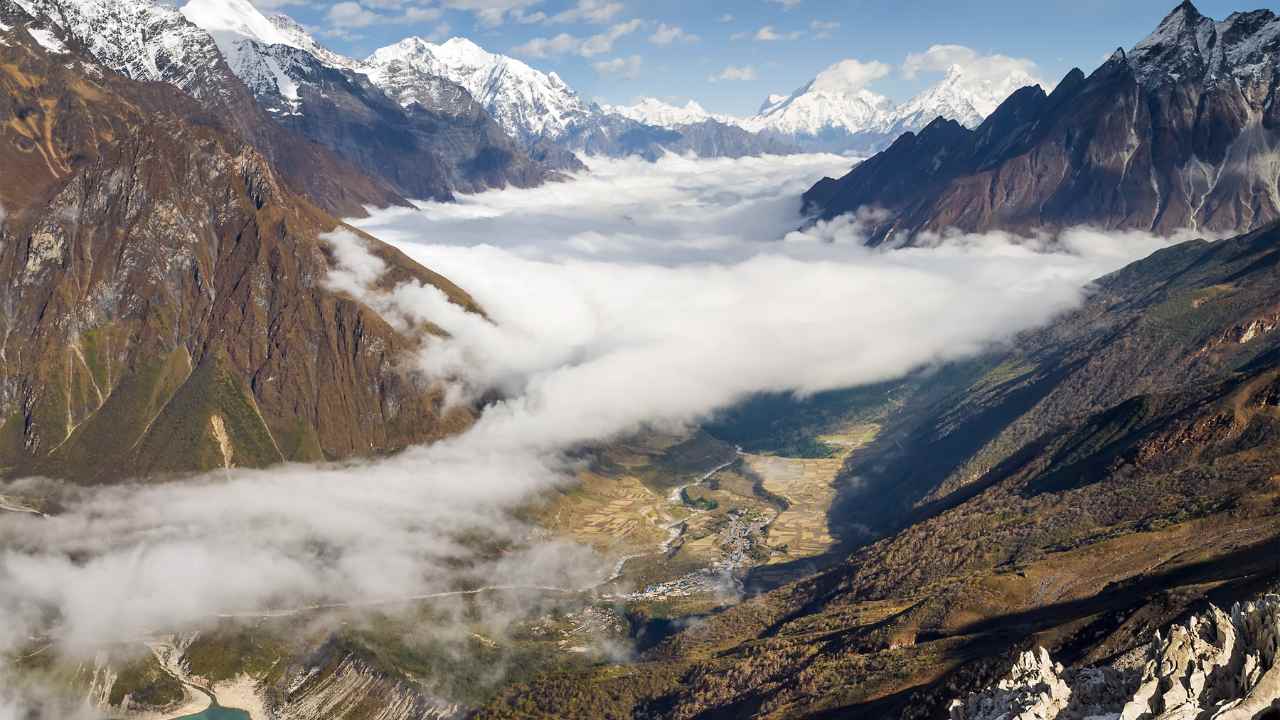
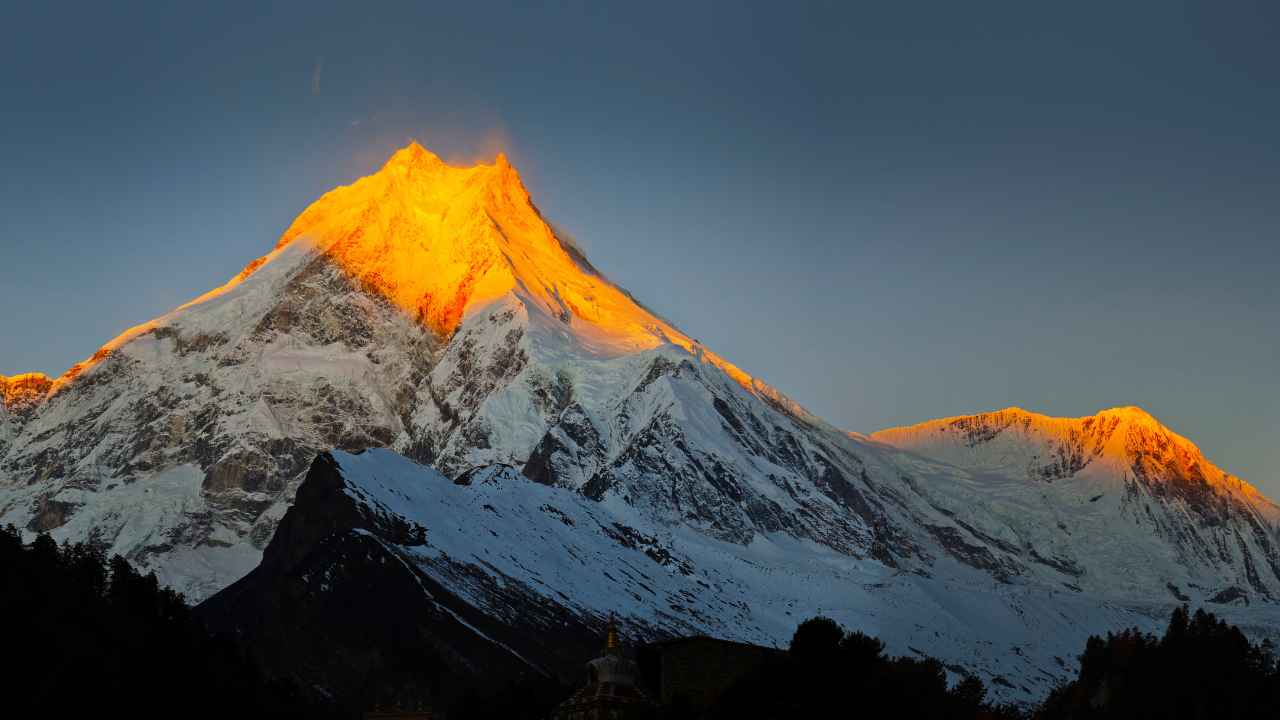
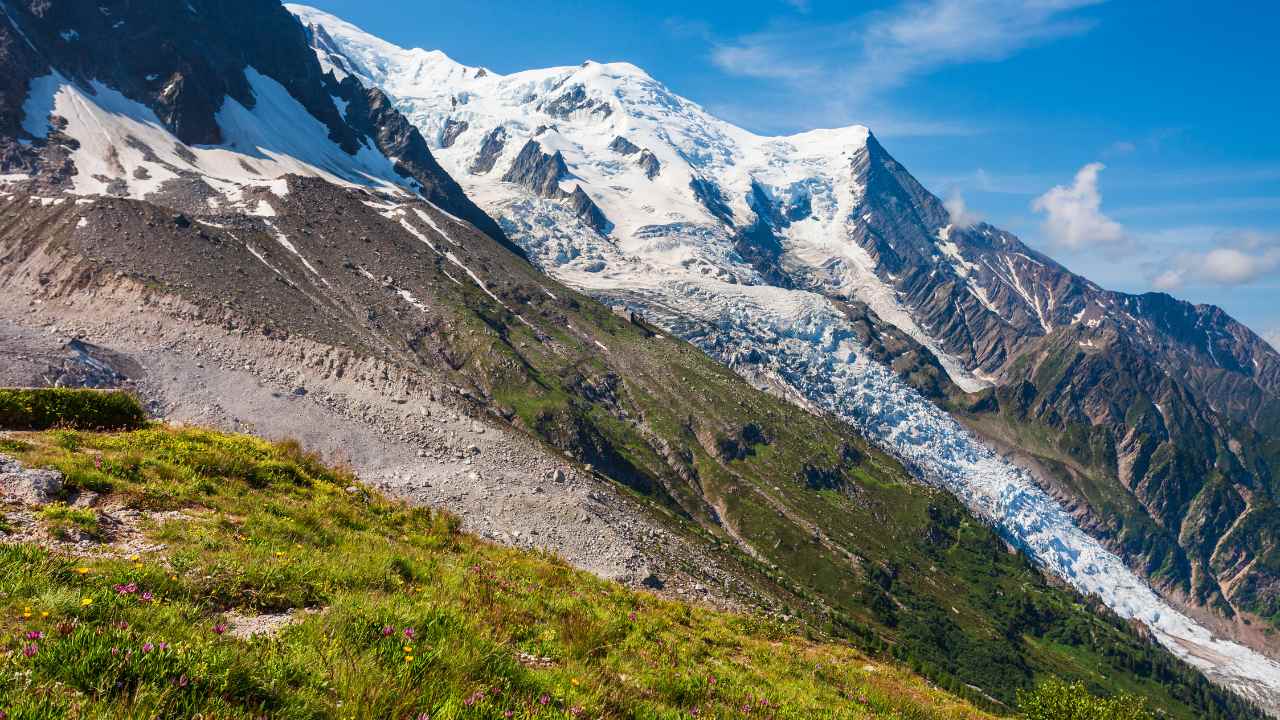
A Journey Through Stunning Landscapes
One of the most compelling reasons to take on the Manaslu Circuit is the incredible variety of landscapes it offers. The trek begins at a relatively low altitude, with lush subtropical forests and terraced rice fields lining the early part of the journey. You’ll walk through dense rhododendron, oak, and bamboo forests, crossing rivers on rickety suspension bridges and passing through quaint villages where life moves slowly and traditions run deep.
As you move higher, the terrain becomes more rugged and barren. The valley narrows, and the surroundings grow more alpine, with views of snow-capped peaks appearing at every turn. The towering face of Manaslu dominates the horizon, providing an awe-inspiring backdrop as you ascend toward the high-altitude regions. The landscape near Larkya La Pass is stark and windswept, creating a sense of raw beauty that’s hard to match anywhere else.
The journey also takes you through remote Tibetan-influenced villages like Samagaun, Soti Khola, and Bimphedi, where you’ll get to experience the unique culture of the Tamang and Gurung people. The Buddhist monasteries scattered along the trail further enrich the experience, offering trekkers a spiritual insight into the region’s traditions.
Crossing Larkya La Pass: A Moment of Triumph
The trek's culmination is the crossing of Larkya La Pass, one of the journey's most challenging but rewarding parts. The final stretch to the pass can be long and exhausting, with high winds and the risk of snow. But when you reach the top, the views are spectacular. The panorama of snow-covered peaks, including Manaslu, Himalchuli, and Ngadi Chuli, is an unforgettable reward for all the hard work it took to get there.
At an elevation of 5,160 meters, Larkya La is a serious challenge, especially with the thin air and the unpredictable weather. It’s essential to start early to avoid the afternoon winds and ensure enough daylight to make the descent safely. But once you stand at the top, gazing out over one of the most beautiful mountain ranges in the world, the feeling of accomplishment is overwhelming.
Why the Manaslu Circuit is Worth the Effort
The Manaslu Circuit Trek may be difficult, but it’s also incredibly rewarding. Unlike more tourist-heavy routes, the trek offers a sense of remoteness and discovery that’s hard to find elsewhere. You’ll encounter fewer crowds, giving you a more authentic experience of Nepal’s natural beauty and culture.
Along the way, you’ll be challenged physically and mentally. Still, every day on the trail brings new rewards, from sweeping views of the Manaslu range to the unique cultural encounters in isolated villages to the satisfaction of conquering the Larkya La Pass. And with the trek’s remote nature comes a level of solitude that’s hard to find on more popular trekking routes, allowing you to experience the Himalayas in their purest, most untouched form. I suppose you're looking for a trek that offers adventure, solitude, and stunning scenery while testing your endurance and pushing your limits.
In that case, the Manaslu Circuit Trek should be on your list. It's a trek for the bold—those who are up for the challenge and ready to immerse themselves in the breathtaking beauty of one of Nepal’s most rugged and remote regions.
3. Everest Three Passes Trek: The Ultimate Everest Experience
For many trekkers, the word Everest conjures up images of towering peaks, high-altitude challenges, and the raw power of nature. While the classic Everest Base Camp Trek is one of the most popular ways to witness Mount Everest's majesty, The Everest Three Passes Trek is the ultimate experience for those seeking more adventure, more challenge, and more of the awe-inspiring Himalayas.
If you're looking to push your limits while surrounded by some of the most dramatic landscapes on Earth, The Everest Three Passes Trek is the journey you've been waiting for. This tough, multi-day trek traverses high mountain passes, remote villages, and some of the most epic scenery imaginable. It's a trek designed to bring you to Everest's base and take you on an incredible journey through the Khumbu region's rugged heart.
Why the Everest Three Passes Trek Is Different
Unlike the well-trodden path to Everest Base Camp, the Three Passes Trek takes you deeper into the Everest region, crossing Kongma La, Cho La, and Renjo La, three of the highest trekking passes in Nepal. Each pass stands at an altitude of over 5,300 meters (17,500 feet), and crossing them is no small feat. These passes provide trekkers with a thrilling combination of extreme physical challenges, spectacular views, and a sense of true wilderness.
The trek also takes you through several lesser-visited areas of the Everest region, allowing you to experience the Khumbu in a way that's far removed from the more popular Everest Base Camp route. You'll pass through high-altitude lakes, climb rugged ridges, and witness the grandeur of Mount Everest, Lhotse, Makalu, and Cho Oyu in ways that few other trekkers have the chance to.
What Makes the Three Passes Trek So Challenging
As the name suggests, this trek is not for the faint of heart. The biggest challenge is the three high-altitude passes: Kongma La (5,535 meters), Cho La (5,420 meters), and Renjo La (5,340 meters). These passes are high in altitude and require serious effort to cross. Steep, rocky climbs, narrow ridges, and unpredictable weather make these sections a test of endurance.
The Kongma La Pass is often the most physically demanding, requiring a steep and challenging ascent, but the rewards of the panoramic views at the top are worth every step. The Cho La Pass, meanwhile, is notorious for its icy conditions and the danger of snowstorms. It's one of the most technically challenging parts of the trek, often requiring a bit of scrambling and extra care with footing.

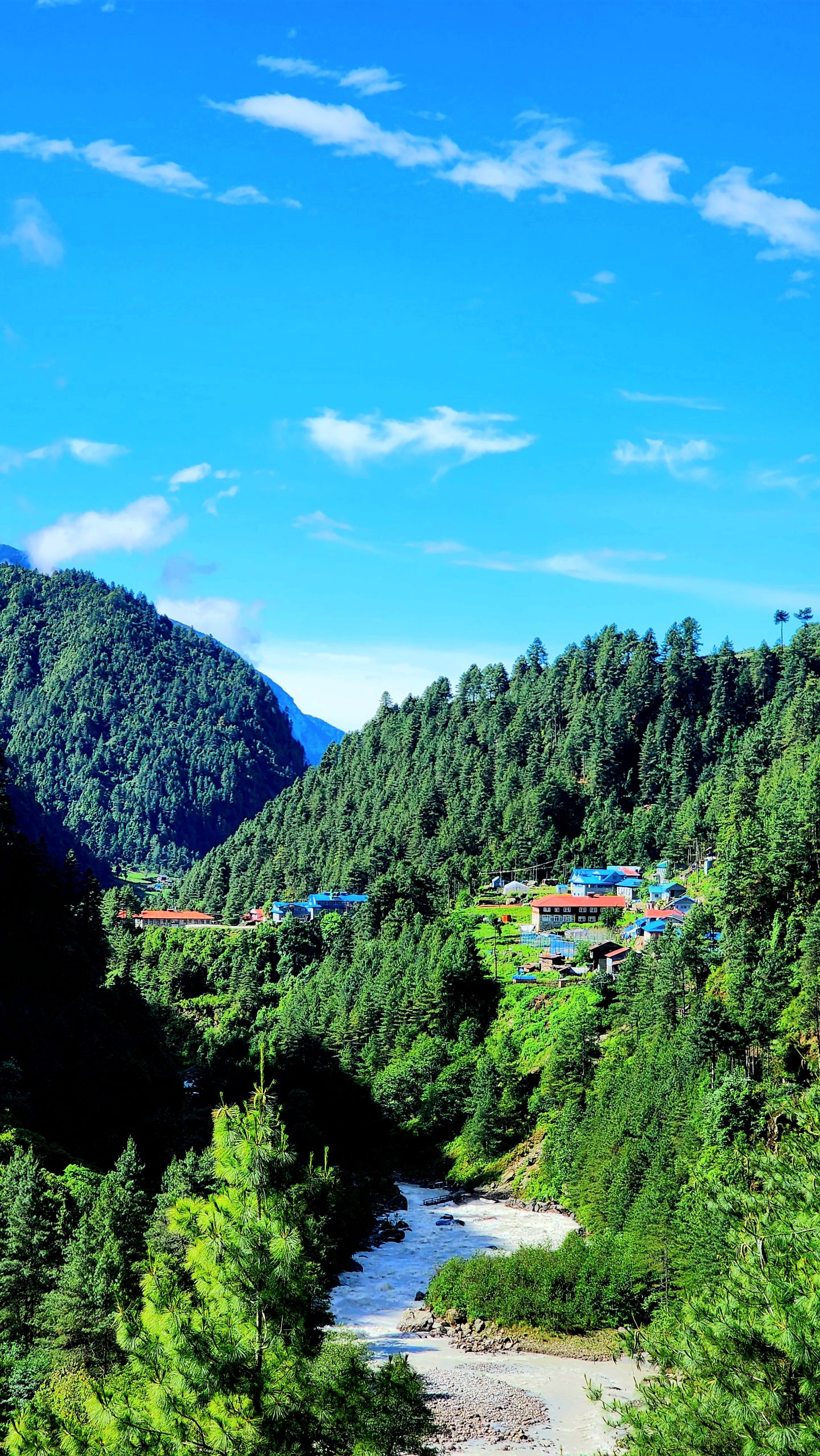
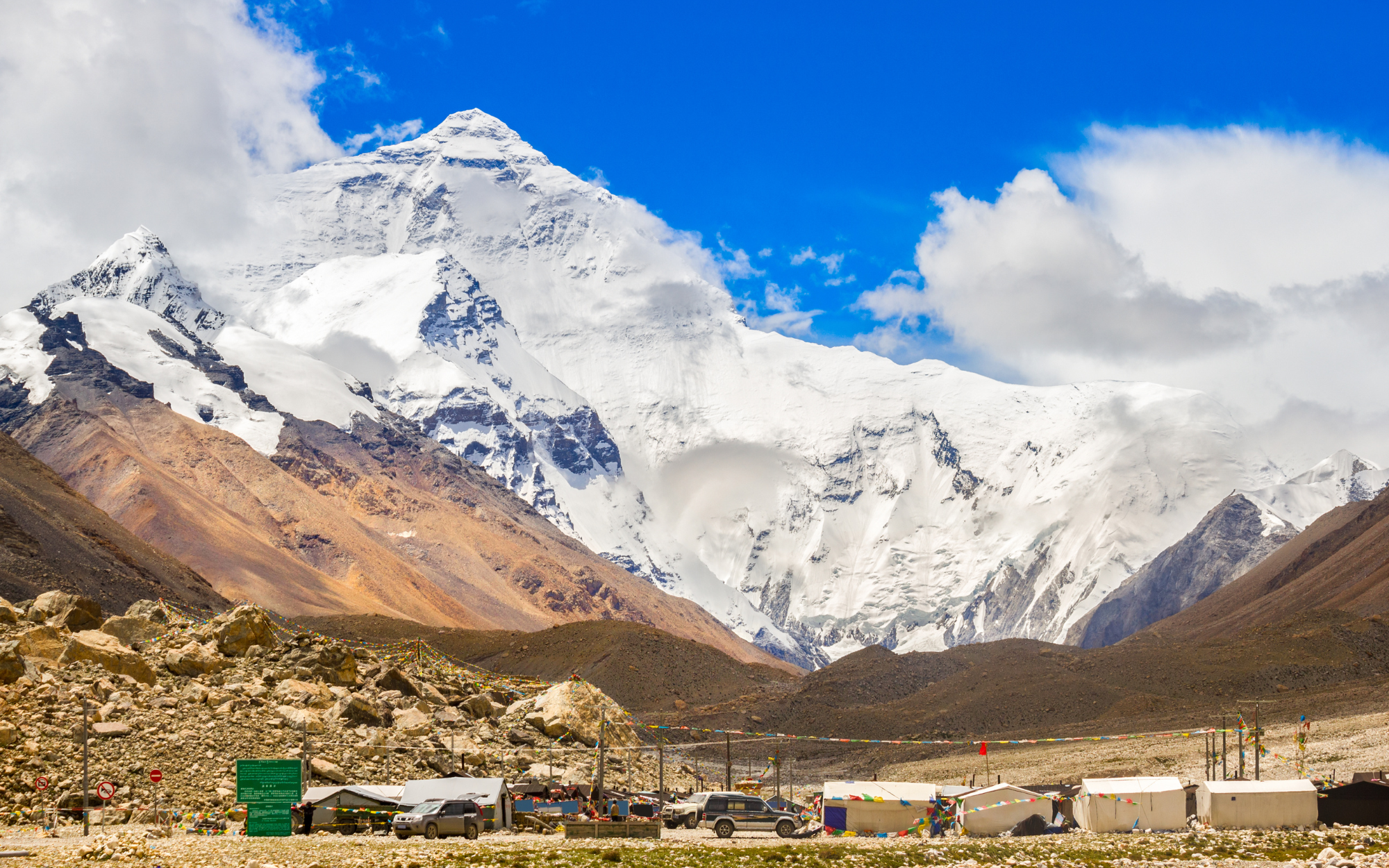
The trek's high altitude also presents a significant challenge. Above 5,000 meters, the air thins, and trekkers must be vigilant about acclimatization. Acute mountain sickness (AMS) is always a concern, so you must pace yourself, stay hydrated, and allow plenty of time for rest and recovery. With proper planning, however, most trekkers can handle the demands of the trek.
A Journey Through the Heart of the Khumbu Region
While the physical challenge is undeniable, The Everest Three Passes Trek is equally an exploration journey. You'll pass through some of Khumbu's most beautiful and remote villages, such as Gokyo, Namche Bazaar, Lobuche, and Dingboche, where you can interact with the resilient Sherpa people and learn about their way of life.
The trek's route provides an up-close look at the Sherpa culture, with ancient monasteries and prayer wheels scattered along the way. You'll experience the hospitality of the locals, who are always eager to share stories of their traditions and the region's history. Every village offers its charm and atmosphere, from the bustling trade routes of Namche Bazaar to the peaceful, high-altitude tranquility of Gokyo Lakes.
Speaking of Gokyo, this is one of the highlights of the trek. The stunning Gokyo Lakes, surrounded by snow-covered peaks, are a serene and striking contrast to the rugged terrain of the Three Passes. The sight of Mount Everest, Lhotse, and Makalu reflecting in the clear waters of these lakes is a breathtaking experience. You'll also get to climb I, which offers yet another incredible view of Everest and the surrounding peaks.
The Ultimate Everest Views
Throughout the trek, the views of Everest and its surrounding peaks are simply unbeatable. From Kala Patthar, a renowned viewpoint just above Pangboche, you'll have a clear, unobstructed view of Mount Everest from a different angle than most trekkers experience. The sight of the world's highest peak in the early morning light, bathed in golden hues, is a moment many trekkers describe as one of the most awe-inspiring experiences of their lives.
Each pass and summit offers a unique perspective of the Everest region, allowing you to appreciate the vastness and complexity of this majestic mountain range. Unlike the crowded Everest Base Camp, you'll enjoy the scenery in relative solitude, with fewer trekkers along the route.
Why It's the Ultimate Everest Experience
The Everest Three Passes Trek takes you to places that most trekkers never get the chance to see. It's a trek that goes beyond the traditional Everest Base Camp route, offering a full immersion into the region's rugged beauty and the grandeur of the world's highest peaks. You'll challenge yourself physically, but the reward is extraordinary.
Suppose you're ready to push your limits, experience the Everest region in its purest form, and witnesEarth'some of the most magnificent moans on Earth. In that case, the Everest Three Passeyour is your ultimate adventure. This trek is for those who want to truly experience Everest—not just from a distance, but up close and personal, surrounded by the grandeur of the Khumbu's high passes, lakes, and remote villages.
It's a trek that tests your strength, willpower, and sense of adventure. But for those who are up for the challenge, the Everest Three Passes Trek will reward you with an experience like no other.
4. Kanchenjunga Circuit Trek: A Journey into the Wild East
If you want to venture into the unknown, far from the crowds, and experience Nepal’s raw wilderness at its finest, The Kanchenjunga Circuit Trek should be on your list. Far less traveled than other renowned treks like the Everest or Annapurna circuits, the Kanchenjunga trek takes you deep into the easternmost part of Nepal, right into the shadow of the mighty Kanchenjunga (8,586 meters)—the third-highest mountain in the world.
This trek offers an unparalleled opportunity to explore one of Nepal's most remote and pristine regions. Rugged terrain, traditional villages, rich biodiversity, and spectacular mountain vistas await those brave enough to embark on this adventure. If you taste true exploration and want to immerse yourself in the unspoiled wilderness of The Kangchenjunga Conservation Area, this journey is for you.
Why the Kanchenjunga Circuit Trek is Unique
The Kanchenjunga Circuit Trek is an off-the-beaten-path journey that feels like a true exploration into the unknown. Most of Nepal’s trekking routes, while offering stunning scenery and cultural experiences, are relatively well-known and frequented by many trekkers each year. Kanchenjunga, however, remains one of Nepal’s more remote and lesser-explored regions, giving trekkers the feeling of stepping into a hidden world.
The route takes you through deep valleys, dense forests, high-altitude pastures, and alpine meadows, surrounded by some of the earth's most magnificent mountain views. The trek also passes through diverse ecosystems, from subtropical jungles at the start to alpine and tundra landscapes at higher elevations.
Unlike other famous trekking regions, The Kanchenjunga trek has a distinct sense of solitude and untouched beauty. Here, the crowds are scarce, allowing you to savor the peace of the mountains, often accompanied only by the sound of your breath and the wind rustling through the trees.
Trekking Through the Wild East
The Kanchenjunga trek is not just a physical challenge—it’s a journey through a region steeped in cultural richness and natural beauty. The trail begins in the subtropical lowlands, passing through lush rhododendron forests and terraced fields, where you’ll encounter Brahmin, Sherpa, and Limbu communities. The region's traditional villages offer an authentic glimpse into the daily lives of the local people, who maintain age-old customs, language, and spiritual practices.
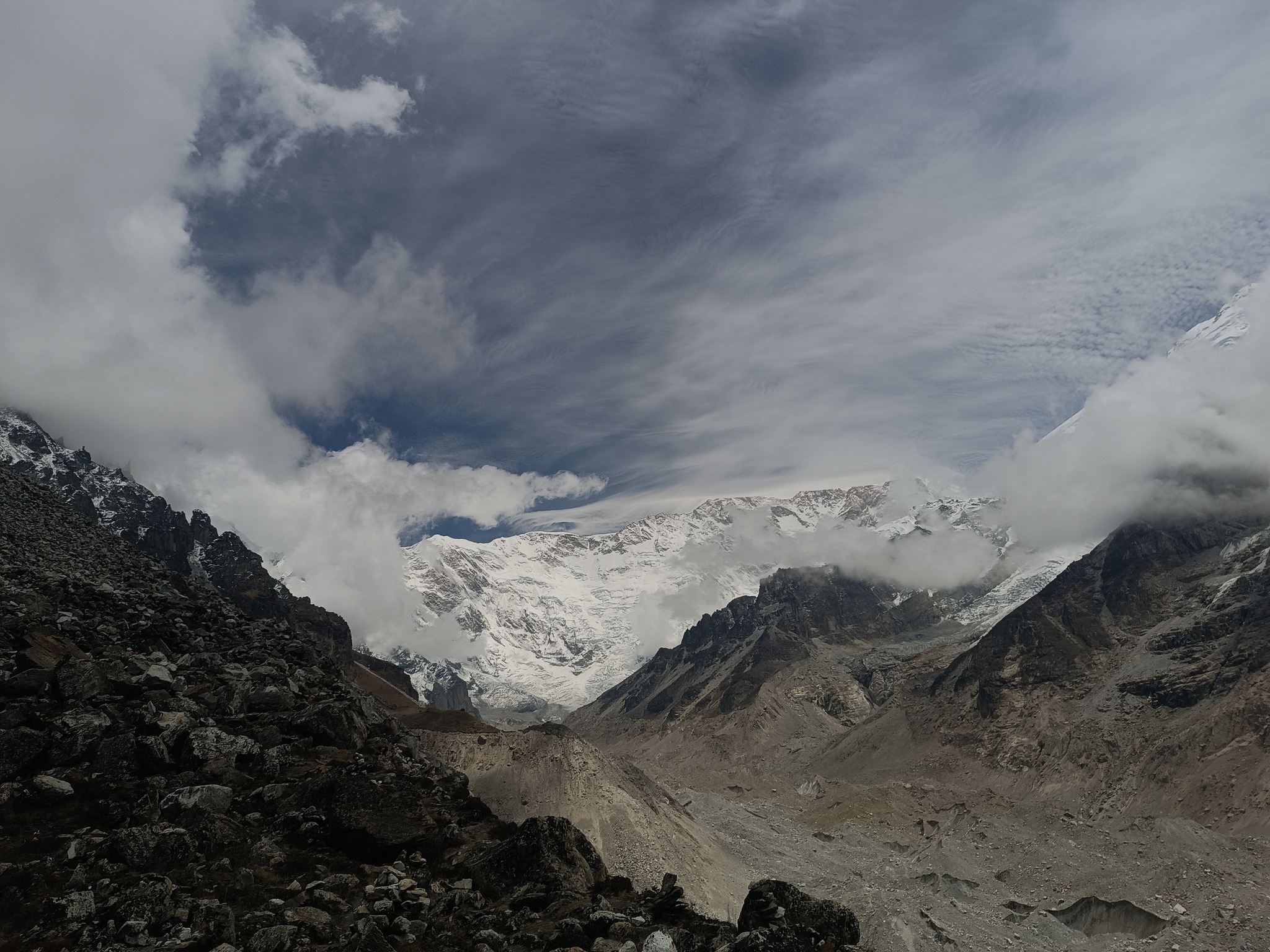
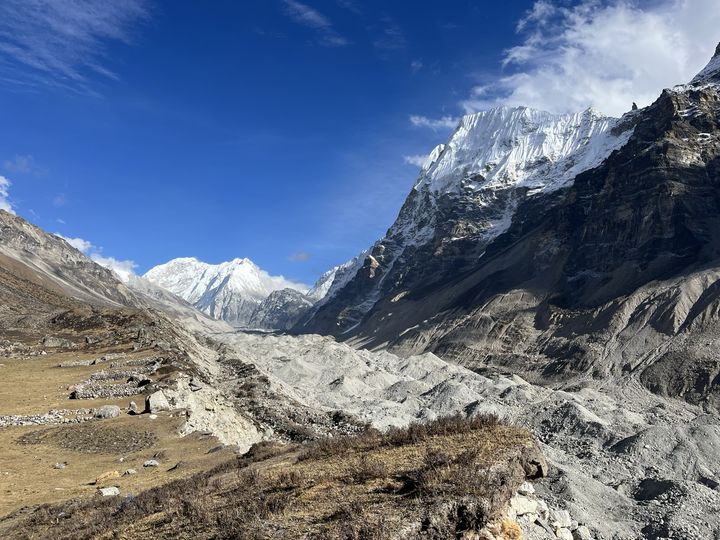
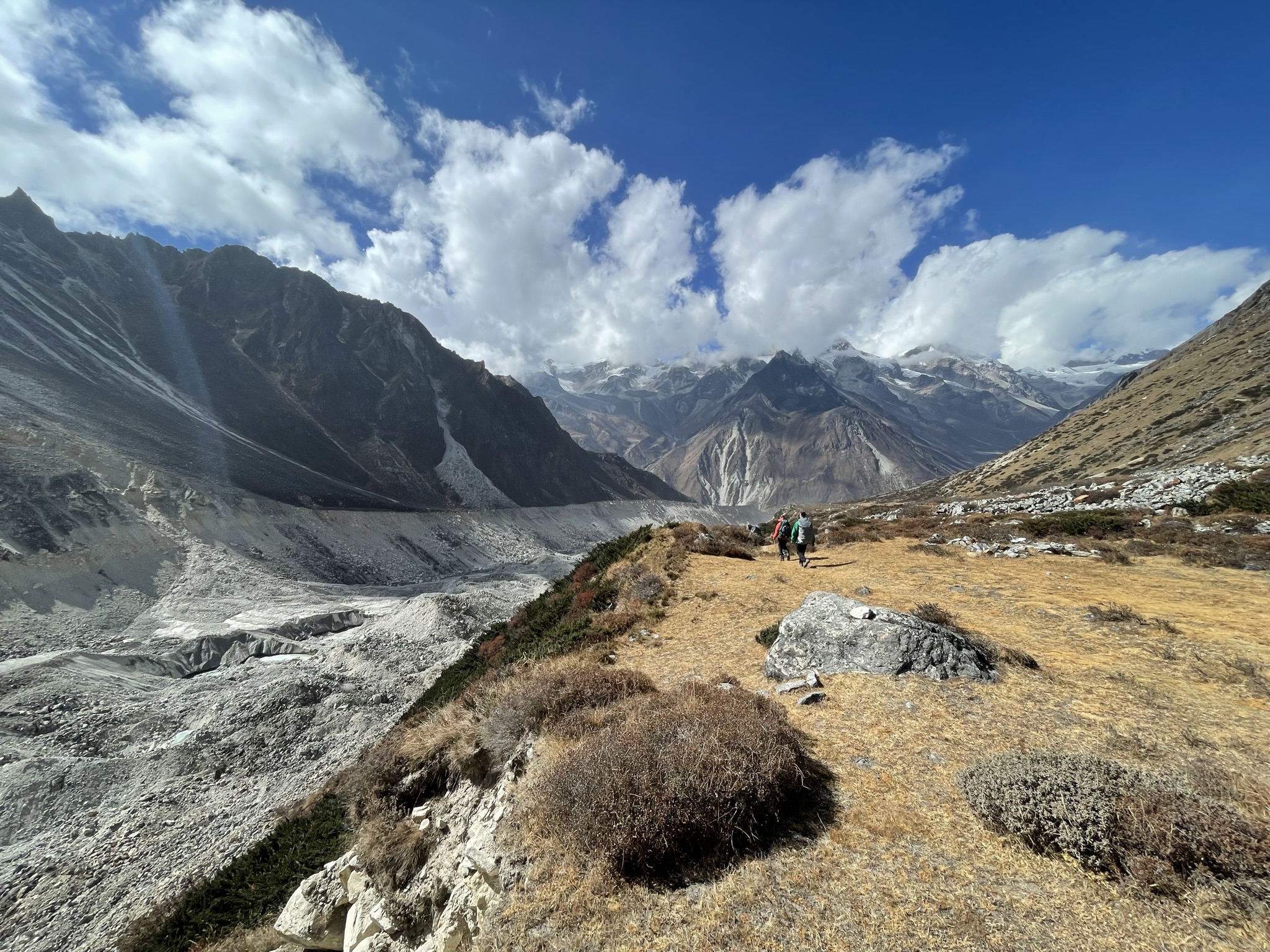
As you climb higher, the landscape undergoes a dramatic transformation. You’ll trek through dense bamboo forests, along rivers, and into alpine meadows, where the snow-capped peaks of Kanchenjunga and Panchachuli dominate the horizon. The trek also takes you into areas where Tibetan Buddhism has a strong influence, and you’ll have the chance to visit monasteries, chortens, and mani stones that have remained unchanged for centuries.
The people of this region are incredibly welcoming, but because of the remoteness, they are also deeply connected to their traditions. Most villages have small Gumba (Buddhist monasteries), and trekking through this area gives you a real sense of the Tibetan-influenced culture of Nepal’s eastern Himalayas.
The Challenges of Kanchenjunga
The Kanchenjunga Circuit Trek is not an easy journey by any means. It’s a physically demanding trek that requires a solid level of fitness and stamina. The route spans roughly 17-25 days, depending on the itinerary, and the daily hiking distances can be long, with steep ascents and descents.
The trail reaches an altitude of over 5,000 meters at Kanchenjunga Base Camp, making proper acclimatization crucial to avoid altitude sickness. Altitude-related concerns should not be taken lightly, with several high-altitude passes to cross, including The Mirgin La Pass (4,600 meters) and The Sinion La Pass (4,660 meters).
Along with the high altitudes, the trekking conditions can also be challenging. In certain sections, the paths can be narrow and rugged, and the weather is unpredictable, with snow and rain at higher altitudes, especially during the winter months. As such, trekking here requires physical fitness and mental resilience. Being well-prepared and having an experienced guide or porter is highly recommended, particularly if you want to fully enjoy the trek’s remote nature without being caught off guard by the demands of the terrain.
The Spectacular Scenery
One of the key draws of the Kanchenjunga Circuit Trek is the breathtaking mountain scenery. The Kanchenjunga Massif is a massive, snow-covered behemoth with multiple peaks above the surrounding landscape. At various points along the trek, the mountain’s towering peaks seem to grow larger, looming overhead as you get closer to the base camp. The views from Kanchenjunga Base Camp are jaw-dropping, with panoramic vistas of some of the world’s highest mountains, including Makalu, Lhotse, Everest, and Panchachuli.
In addition to the mountain vistas, you’ll also experience lush valleys, pristine lakes like Yangma Tso, and dense forests home to a rich array of wildlife. The Kangchenjunga Conservation Area has several endangered species, including the red panda, snow leopard, and Himalayan tahr. You may even glimpse some of these elusive creatures if you're lucky.
The Spiritual Aspect of the Trek
For many trekkers, the Kanchenjunga Circuit Trek offers physical challenges and spiritual rewards. The influence of Tibetan Buddhism is strong throughout the region, and trekking through the area is often as much a pilgrimage as a physical journey.
Many of the monasteries along the route are active spiritual centers, and it’s not uncommon to see locals offering prayers, spinning prayer wheels, and chanting mantras. The path is dotted with chortens, mani stones, and prayer flags, creating a sense of reverence and peace. You’ll find moments of reflection in the quiet solitude of the high passes, where the mountains seem to speak a language only the soul understands.
Why Kanchenjunga is Worth the Effort
The Kanchenjunga Circuit Trek offers something few treks can: a true sense of discovery. While other routes in Nepal are known for their popularity and crowds, the Kanchenjunga trek immerses you in a pristine and unspoiled environment that feels like an untouched corner of the earth. It’s a trek where you witness the grandeur of the Himalayas but also experience the deep culture and spirituality of Nepal’s eastern regions.
It’s a trek that demands physical effort and resilience. Still, it rewards you with magnificent views, a deep sense of achievement, and the opportunity to explore one of the world’s most remote and magical places. If you’re ready for an adventure that takes you beyond the ordinary and into the wild heart of Nepal, The Kanchenjunga Circuit Trek is the journey of a lifetime.
5. Dolpo Trek: A Journey to the End of the Earth
For trekkers seeking something unique, where the road less traveled becomes an unforgettable adventure, The Dolpo Trek offers an extraordinary experience. Often described as a journey to the "end of the earth," this remote region of Nepal lies in the far west, just beyond the Annapurna and Dhaulagiri ranges. It’s a place of raw beauty, where time seems to have stood still, and nature reigns supreme.
The Dolpo region is home to some of Nepal's most rugged and untouched landscapes. For those seeking an authentic trekking experience—one that immerses you in Tibetan culture, takes you across high-altitude passes, and reveals some of the most breathtaking scenery in the Himalayas—The Dolpo Trek is a journey that will leave you awe-struck, exhausted, and fulfilled all at once.
Why the Dolpo Trek is So Special
The Dolpo Trek is not for the casual hiker. Located in a restricted area of Nepal, this trek requires a special permit and is best suited for those with a sense of adventure, a love for rugged wilderness, and the ability to endure long days on the trail. This trek's physical challenge, remoteness, and pristine beauty make it so special. While other trekking regions in Nepal may be crowded with tourists, Dolpo remains one of the country's most isolated and least explored corners.
The trek takes you into a world that feels worlds apart from the modern world. With its ancient Tibetan monasteries, stark landscapes, and high-altitude lakes, Dolpo remains deeply connected to the traditional way of life that has persisted for centuries. The local people, primarily of Tibetan origin, have maintained their customs and culture largely untouched by the influences of modernity.
The Challenge of Dolpo
The Dolpo Trek is undoubtedly challenging. The trek typically takes 18-24 days, depending on the route, and involves a mix of moderate and difficult days. The trek's highest point is Numa La Pass (5,190 meters), and you’ll also cross Baga La Pass (5,170 meters), both of which require careful acclimatization due to the high altitudes. The trail is a mix of rugged terrain, steep ascents, and descents, and there’s a chance of unpredictable weather that can add to the difficulty.
The high-altitude passes are demanding but offer spectacular views of the Himalayas, especially Kanjiroba Himal and the Dhaulagiri Range. And while the trek's difficulty shouldn’t be underestimated, the sense of isolation and immersion in nature makes every step worth the effort.
The Dolpo Trek is a great way to experience a true wilderness adventure, but it’s essential to be prepared. The trail isn’t as developed as other treks, so you may need to carry extra supplies, and many of the villages along the way are small and remote. However, with proper preparation, a good guide, and a willingness to embrace the challenges, the trek offers a once-in-a-lifetime experience.
A Land Steeped in Tibetan Culture
Dolpo is one of the few places in Nepal where you can experience Tibetan Buddhism in its purest form. The people of Dolpo, known as the Dolpopa, follow Tibetan Buddhist traditions that date back centuries. Along the way, you’ll encounter monasteries, mani walls (stone walls inscribed with mantras), prayer flags, and even sacred lakes, all of which play an important role in the spiritual life of the region.
One of the key highlights of the trek is a visit to the Shey Gompa (a remote Buddhist monastery), located near Shey Phoksundo Lake. This monastery is an important pilgrimage site for Tibetan Buddhists, and its isolation and serene surroundings make it a deeply peaceful place to visit. The trek also offers opportunities to interact with the locals, who maintain a traditional lifestyle of farming, herding, and religious devotion.
While trekking through Dolpo, you will witness an authentic way of life that has remained unchanged for centuries. The people live in small, stone-built villages, and their daily routines are closely linked to the rhythms of the land—caring for yaks, growing barley, and practicing their faith. In these villages, you’ll be welcomed with warm hospitality and given a rare glimpse into the lives of people who call this isolated region home.
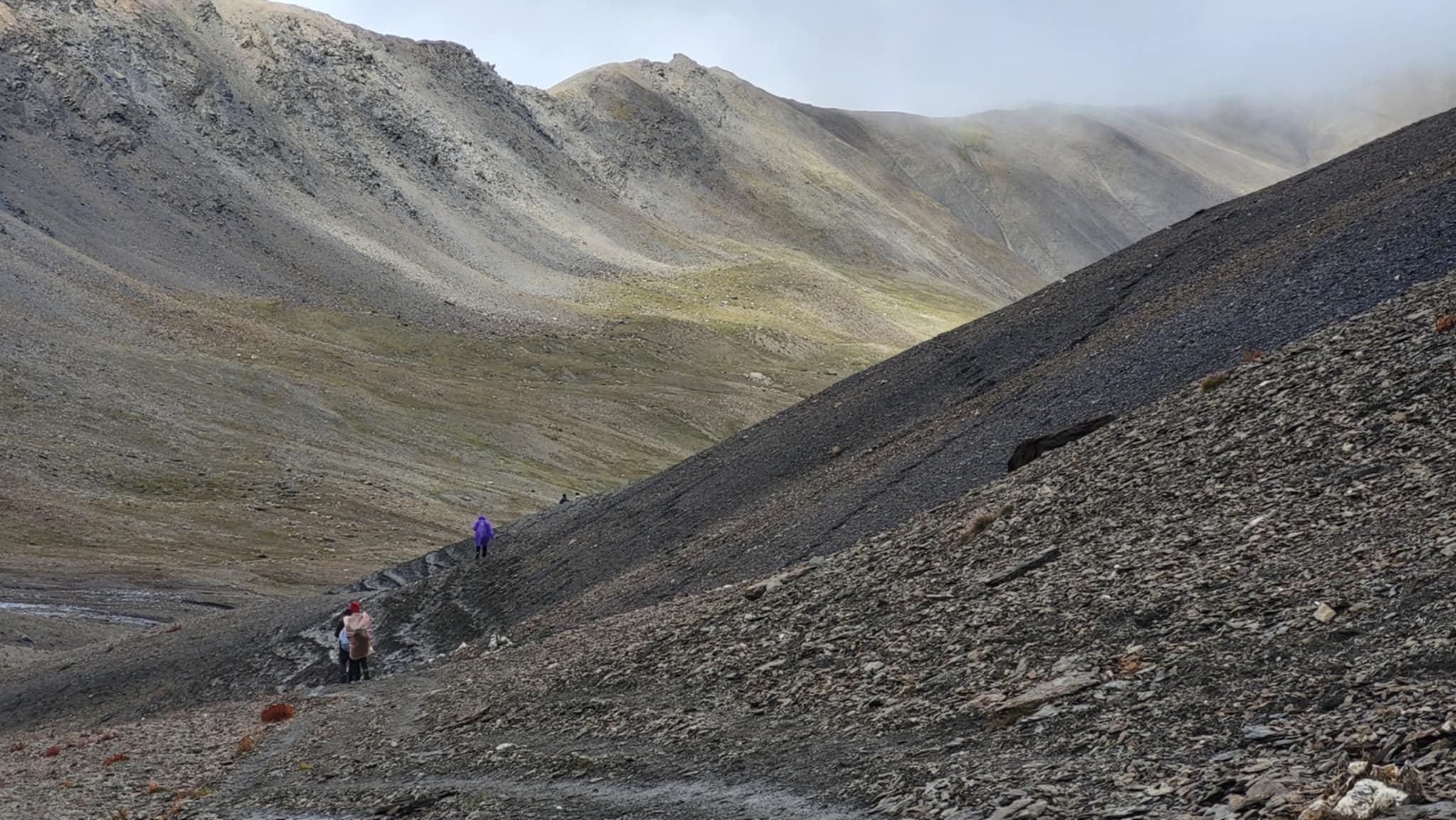

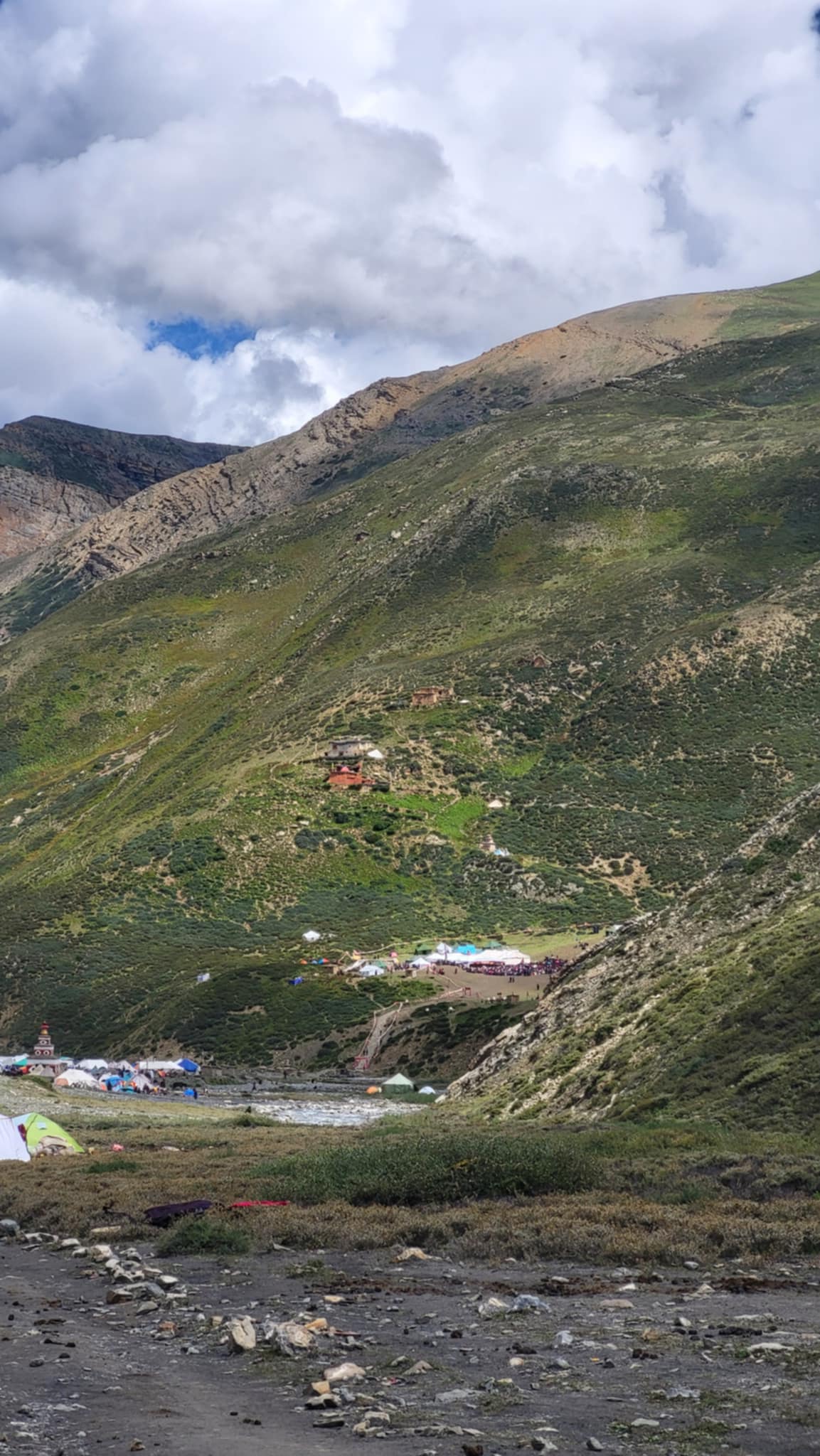
Unmatched Natural Beauty: Lakes, Valleys, and Peaks
While the cultural aspects of the Dolpo Trek are remarkable, the region’s natural beauty is equally stunning. The trek takes you through dramatic landscapes that range from high-altitude deserts to lush green valleys, where deep blue lakes reflect the snow-capped peaks above.
One of the trek's highlights is Shey Phoksundo Lake, a stunning turquoise lake surrounded by cliffs and pine forests. It is Nepal’s deepest lake and has an almost magical quality, especially when viewed in the early morning light. The lake is a natural wonder and a sacred site for the locals, who believe it is home to powerful spiritual forces.
You’ll also pass through lush valleys dotted with juniper and pine trees, along with the Phoksundo River, which winds through this rugged landscape. As you trek higher, the scenery becomes increasingly barren, resembling the Tibetan plateau, with wide-open spaces, rocky ridges, and stark cliffs. The contrast between the lush valleys and the arid highlands makes the trek visually stunning at every turn.
Why Dolpo Is a Trek Like No Other
The Dolpo Trek offers an experience unlike any other in Nepal. Its isolation means it remains largely untouched by tourism, making it an ideal destination for those seeking adventure and authenticity. The combination of Tibetan culture, high-altitude landscapes, and rugged wilderness creates a trek that is physically challenging and deeply enriching on a cultural and spiritual level.
This is a trek for those who want to go beyond Nepal's more famous trekking routes and explore a region that few others have the privilege of seeing. It’s a journey that requires a willingness to embrace the wild, a desire to immerse yourself in a remote and mystical corner of the world, and the physical stamina to endure long days in a challenging environment.
The Dolpo Trek isn’t for everyone, but for those ready to take on the challenge, it offers an unparalleled experience that will take you to the heart of the Himalayas and show you a side of Nepal few ever get to witness.
Ready to Take on the Challenge?
These tough treks aren’t just about physical strength—they’re about the kind of adventure that leaves you forever changed. Each of these routes challenges you in different ways, from steep mountain passes to remote villages and unpredictable weather. But the rewards—breathtaking views, cultural experiences, and the sense of triumph when you reach your destination—are beyond compare.
If you’re looking for an adventure that will challenge you to the core and offer an experience like no other, Nepal’s toughest treks are waiting for you. Will you rise to the challenge? And if you are ready for the one in a lifetime challenge, then you can join us, and we will try to make you complete the challenges with full safety and precautions.
